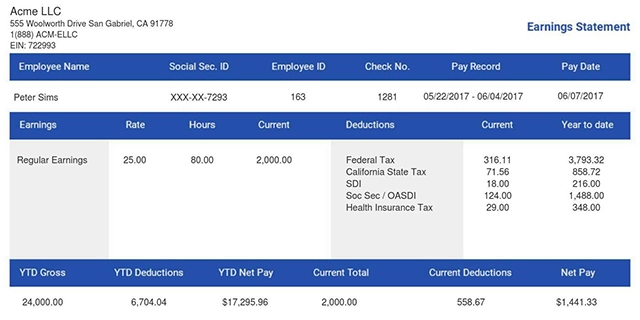HR Organizational Chart and Department Structures - What To Know
Whether your business is big or small, it will need to have a clear organizational structure in order to run properly and efficiently. This is because organizational structures allow you to clearly view what kind of business you have currently and where you want to take your business in the future.
Whether you have plans to grow your current business or are wanting to start your business, knowing the various organizational structure types is essential as you will be able to determine which structure is best suited for your business to get it where you want it to be. HR departments are often incorporated into business strategies because of how important they are to a business's success.
In this guide, we’ve gathered everything you need to know about organizational structure types, so you can figure out which one is best for your business and is going to help you achieve your business goals. We’ll be taking you through what organizational structure means as well as delving into the most common organizational structure types and also some uncommon organizational structure types that you need to know about.
Also read: How To Tell A Candidate They Didn't Get The Job

What Does Organizational Structure Mean?
Before we delve into the various organizational structure types, it’s significant to understand what this actually means. Organizational structures are what companies use to help organize their business depending on the size of the business among many factors.
Organizational structures are ideal because they can help you to grow your business if you are planning to expand or add a department, as well as figure out where employees can fit in the company as it grows.
What Do HR Organizational Structures Look Like?
HR organizational structures are an essential part of any business, especially a growing business. This is because an HR department can help monitor various aspects of the business such as payroll, record-keeping, and employee benefits.
Depending on the size of the business, HR can have a huge impact and influence on how a business is run. According to a recent survey, approximately 70% of HR departments in US-based businesses had a place on the business board of directors, while 66% of businesses include HR management strategies in their plans.
HR is also important to any business because they are the department that implements major policy decisions. There are an array of jobs within HR including Chief Human Resources Officer (known as CHRO) and Chief Diversity Officer (known as CDO). The larger the business is, the more extensive its HR department is likely to be.
Also read: 5 Step Risk Management Process
Who Does the HR Department Report To?
So, who exactly does HR report to? Again, this is dependent on the size of the company as well as the organizational structure that is in place, but due to the major role that HR departments play within the majority of businesses, the Director of HR tends to report to either the CEO, CFO, or COO of the company.
Larger businesses will most likely have a larger HR team that is led by a department manager. In these instances, those working in HR who are not the department lead will report to the Director of HR or HR manager.
Making sure that there is a clear structure of how your HR department is laid not only makes it clear for your HR employees, but will also make it easier for you as a business owner to determine how you can grow your business and what changes can be made to your HR department if any.
Most larger HR departments will have an individual who works on a specific task. For example, one person could be tasked with the monetary transactions involved such as benefits, compensations, and salaries, while another individual may deal with other employees' issues such as compliance and labor relations that may require more face-to-face communication.
The job of the head of HR is to ensure that the HR department is running smoothly and to ensure that each individual within HR is carrying out their duties properly. They are most likely to be included on a board of directors or executive team as they will be responsible for representing the HR department and communicating sensitive information through the board portal software when company or board meetings take place.
Heads of HR will most likely report to the CEO of the company as HR is one of the most important departments in any business as they ensure that employees are being paid regularly and that the business itself is running smoothly.
Also read: Can My Employer Change My Schedule Last Minute?

The Most Common Organizational Structure Types
There are hundreds of organizational structure types that companies can adopt for their businesses. However, there are three that are more commonly applied thanks to their versatility and adaptability regardless of the size of the business and the business’ goals.
Here are the most common organizational structure types:
Functional Organizational Structure
The first organizational structure type you need to know about is also the most commonly applied which is the functional organizational structure. This organizational structure type is based on the expertise that each department has with a manager leading each department.
The simplicity of the functional organizational structure is what makes it the most commonly applied organizational structure type. A lot of companies will have their HR employees within an HR department that is led by a manager, so they can work through their various tasks efficiently.
Functional organizational structures mean that employees are delegated responsibilities and power that is specifically related to their department and area of expertise, rather than asking them to assist with a department that they know nothing about or are not familiar with.
Also read: How Do I Provide Verification of Employment?
Flat Organizational Structure
The second most common type of organizational structure is the flat organizational structure. As the name suggests, this is the opposite of the functional organizational structure and due to its flatter hierarchical structure, this means that there are either no or few members within the middle management team.
A flat organizational structure creates a more even playing field between managers and employees. An example of this could be that one VP oversees a wide range of departments. Those who report to the manager don’t have any middle management to deal with and although the individuals may work in different fields, they are viewed as equals at the same level.
This allows for responsibility and power to be distributed equally across the workplace and is most commonly seen in startups and smaller companies where there may not be as many employees.
Matrix Organizational Structure
The last common organizational structure type that you need to be aware of is the matrix organizational structure. This is when the company’s reporting relationships have been set up to resemble a grid rather than a clear hierarchy. This provides more collaboration and flexibility, which is ideal for project management as it means that various teams will work with each other.
Matrix organizational structures do not have one manager that oversees a specific team but has employees across a variety of areas who will report to a functional manager instead.
This type of organizational structure is commonly seen in industries that require project teams and management, such as retail where there can be a variety of different locations and teams involved.
Also read: Is Not Paying Overtime Illegal in the US?
Other Organizational Structure Types That Are Less Common
Whilst knowing the most common organizational structures is more important as it is more likely that you will adopt one of them to your own business, you should also learn about the other organizational structure types that are less commonly applied.
Here are just a few that you should be aware of:
Divisional Organizational Structure
The first less common organizational structure type is the divisional organizational structure. This is mainly used by larger businesses and is when people are grouped together depending on the service that is provided by the business rather than the work that they do individually.
Network Organizational Structure
Secondly, a network organizational structure is when two or more organizations partner together for commercial or business purposes.
Team Organizational Structure
Lastly, a team organization structure is when a group of employees collaborates in a team and have a shared goal. This group usually works under a supervisor, who will monitor the group’s activities and how close they are to achieving the goal.

Conclusion
In conclusion, there are hundreds of HR organizational structure types that you can choose from, but understanding the differences between them will allow you to make a well-informed decision as to which one is best suited for your business.
Always consider the size of your business currently and think about where you want your business to be both in the short term and long term. This allows you to conduct thorough and extensive planning while putting an organizational structure in place that is going to help you achieve those plans.
Another way you can determine which organizational structure is best for you is to evaluate your current HR team and think about how the department can be expanded and improved to assist you in achieving your business goals. HR teams are imperative to a business's success and therefore should always be considered in your business strategies.
Use our paystub generator software to make sure you are not neglecting such an important business process while trying to improve other sides of your business.















